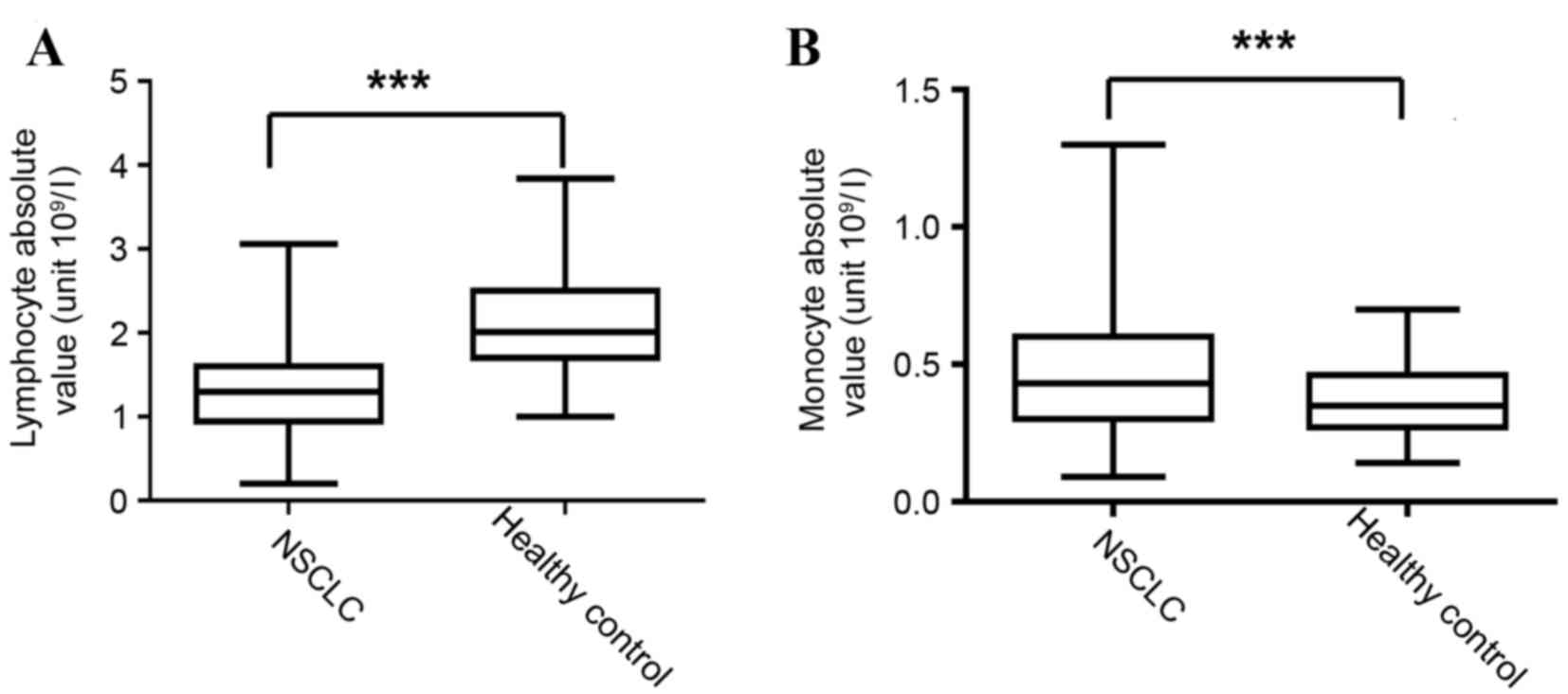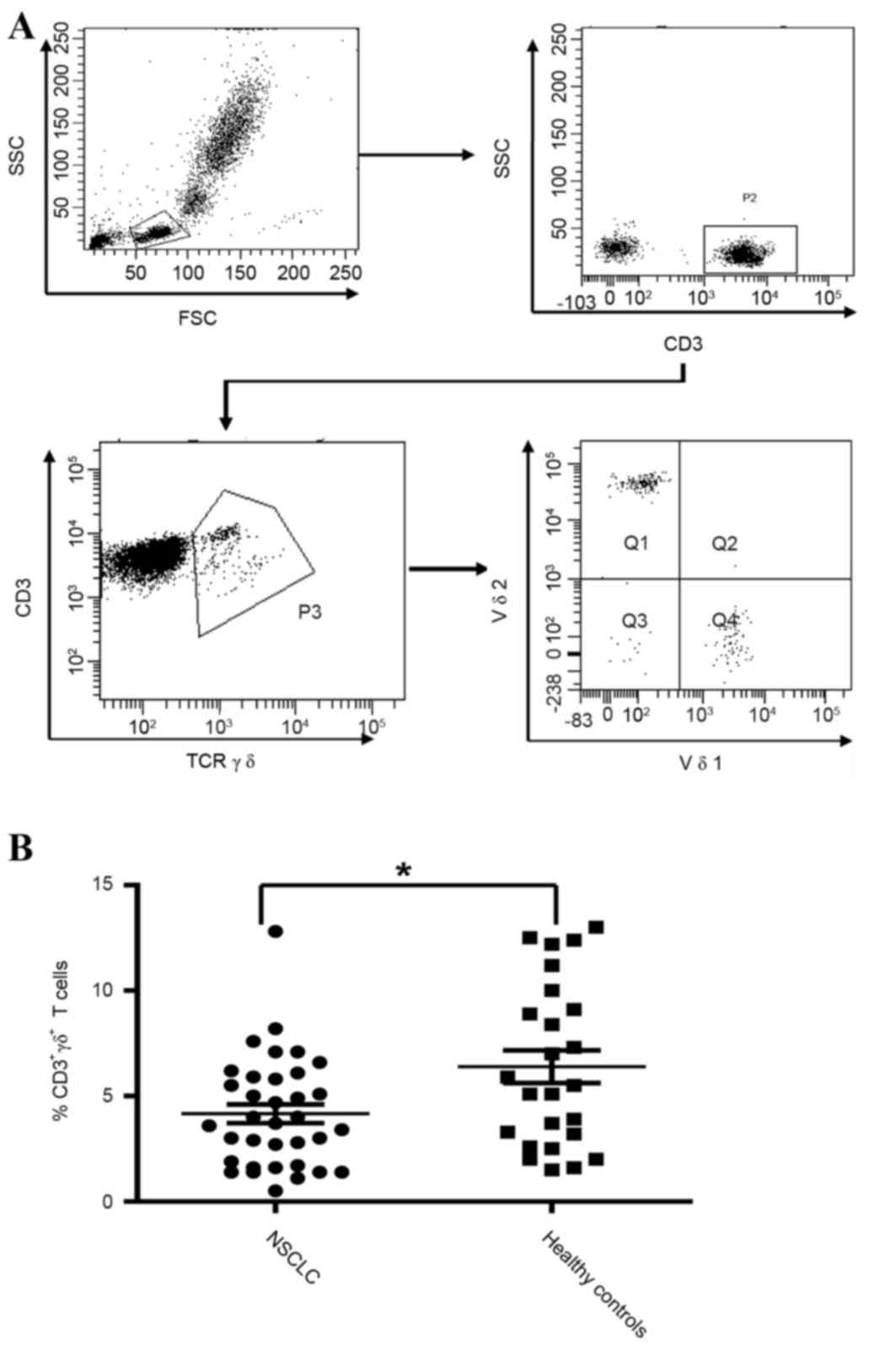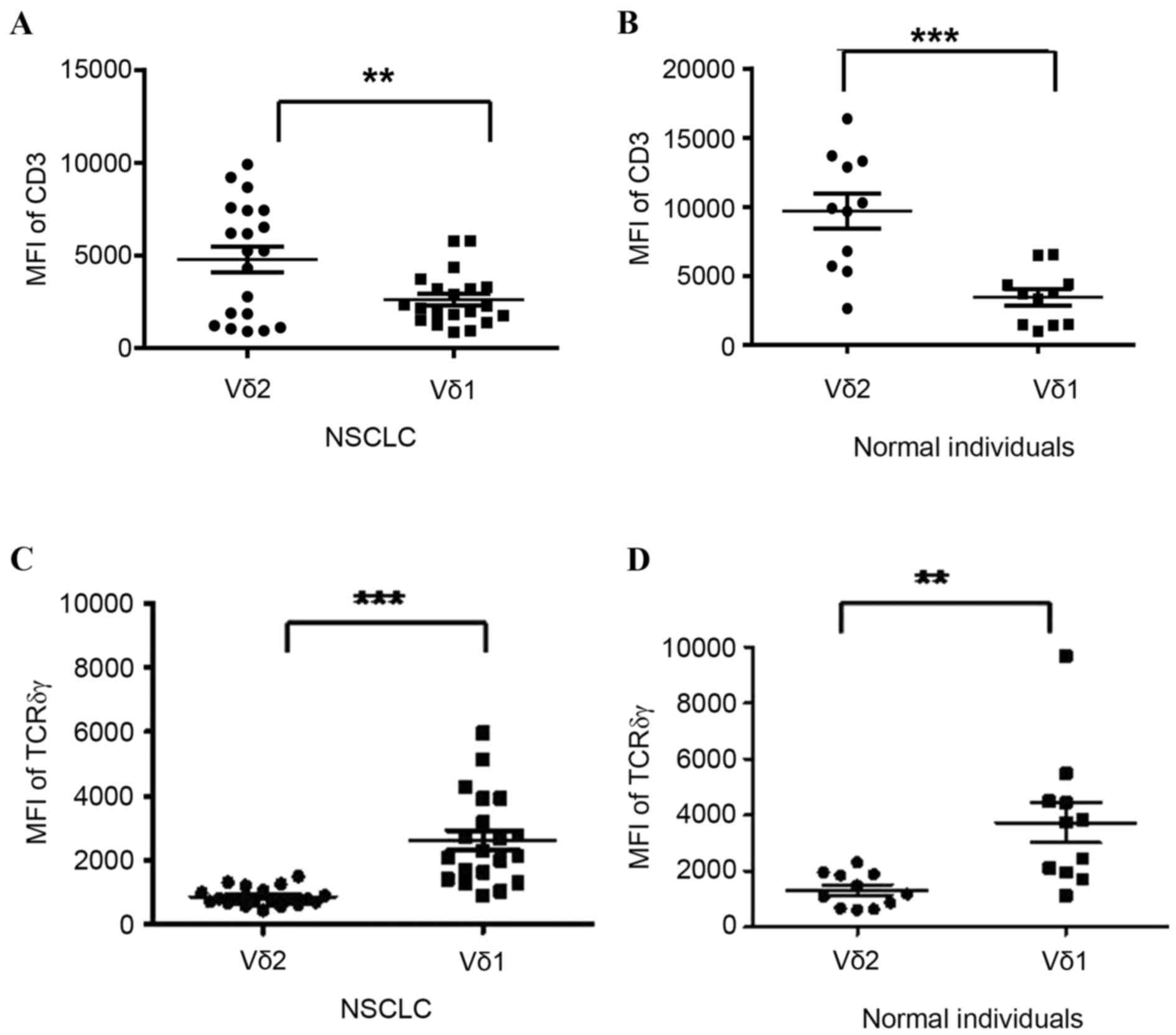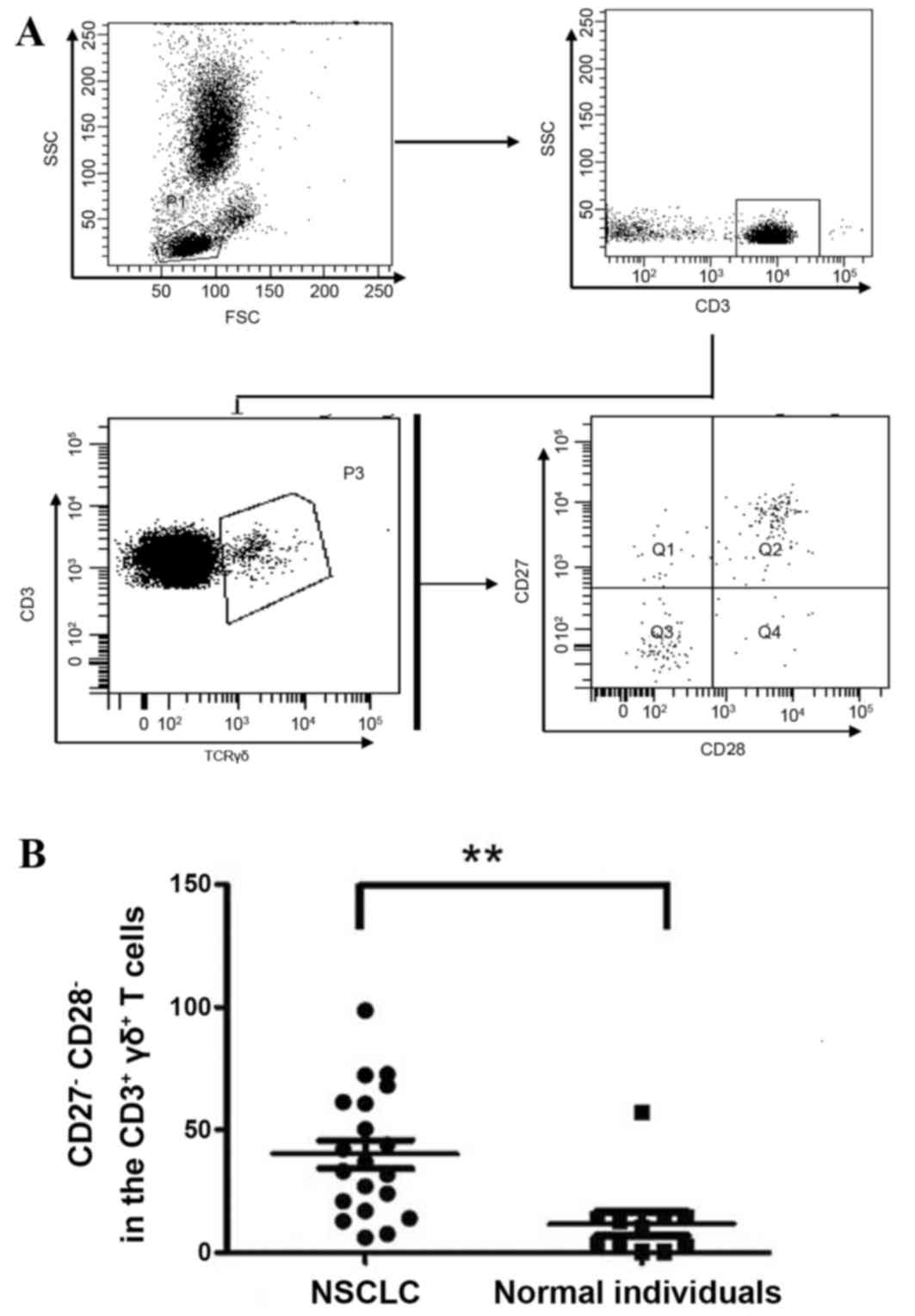|
1
|
Urban EM, Chapoval AI and Pauza CD:
Repertoire development and the control of cytotoxic/effector
function in human gammadelta T cells. Clin Dev Immunol.
2010:7328932010. View Article : Google Scholar : PubMed/NCBI
|
|
2
|
Dieli F, Ivanyi J, Marsh P, Williams A,
Naylor I, Sireci G, Caccamo N, Di Sano C and Salerno A:
Characterization of lung gamma delta T cells following intranasal
infection with Mycobacterium bovis bacillus Calmette-Guérin. J
Immunol. 170:463–469. 2003. View Article : Google Scholar : PubMed/NCBI
|
|
3
|
Paul S and Lal G: Regulatory and effector
functions of gamma-delta (γδ) T cells and their therapeutic
potential in adoptive cellular therapy for cancer. Int J Cancer.
139:976–985. 2016. View Article : Google Scholar : PubMed/NCBI
|
|
4
|
Legut M, Cole DK and Sewell AK: The
promise of γδ T cells and the γδ T cell receptor for cancer
immunotherapy. Cell Mol Immunol. 12:656–668. 2015. View Article : Google Scholar : PubMed/NCBI
|
|
5
|
Porcelli S, Brenner MB and Band H: Biology
of the human gamma delta T-cell receptor. Immunol Rev. 120:137–183.
1991. View Article : Google Scholar : PubMed/NCBI
|
|
6
|
Constant P, Davodeau F, Peyrat MA, Poquet
Y, Puzo G, Bonneville M and Fournié JJ: Stimulation of human gamma
delta T cells by nonpeptidic mycobacterial ligands. Science.
264:267–270. 1994. View Article : Google Scholar : PubMed/NCBI
|
|
7
|
Tanaka Y, Morita CT, Tanaka Y, Nieves E,
Brenner MB and Bloom BR: Natural and synthetic non-peptide antigens
recognized by human gamma delta T cells. Nature. 375:155–158. 1995.
View Article : Google Scholar : PubMed/NCBI
|
|
8
|
Meraviglia S, Eberl M, Vermijlen D, Todaro
M, Buccheri S, Cicero G, La Mendola C, Guggino G, D'Asaro M,
Orlando V, et al: In vivo manipulation of Vgamma9Vdelta2 T cells
with zoledronate and low-dose interleukin-2 for immunotherapy of
advanced breast cancer patients. Clin Exp Immunol. 161:290–297.
2010.PubMed/NCBI
|
|
9
|
Abe Y, Muto M, Nieda M, Nakagawa Y, Nicol
A, Kaneko T, Goto S, Yokokawa K and Suzuki K: Clinical and
immunological evaluation of zoledronate-activated Vgamma9gammadelta
T-cell-based immunotherapy for patients with multiple myeloma. Exp
Hematol. 37:956–968. 2009. View Article : Google Scholar : PubMed/NCBI
|
|
10
|
Kobayashi H, Tanaka Y, Yagi J, Minato N
and Tanabe K: Phase I/II study of adoptive transfer of γδ T cells
in combination with zoledronic acid and IL-2 to patients with
advanced renal cell carcinoma. Cancer Immunol Immunother.
60:1075–1084. 2011. View Article : Google Scholar : PubMed/NCBI
|
|
11
|
Bonneville M, O'Brien RL and Born WK:
Gammadelta T cell effector functions: A blend of innate programming
and acquired plasticity. Nat Rev Immunol. 10:467–478. 2010.
View Article : Google Scholar : PubMed/NCBI
|
|
12
|
Wu J, Groh V and Spies T: T cell antigen
receptor engagement and specificity in the recognition of
stress-inducible MHC class I-related chains by human epithelial
gamma delta T cells. J Immunol. 169:1236–1240. 2002. View Article : Google Scholar : PubMed/NCBI
|
|
13
|
Wu D, Wu P, Wu X, Ye J, Wang Z, Zhao S, Ni
C, Hu G, Xu J, Han Y, et al: Ex vivo expanded human circulating Vδ1
γδT cells exhibit favorable therapeutic potential for colon cancer.
Oncoimmunology. 4:e9927492015. View Article : Google Scholar : PubMed/NCBI
|
|
14
|
Kakimi K, Matsushita H, Murakawa T and
Nakajima J: γδ T cell therapy for the treatment of non-small cell
lung cancer. Transl Lung Cancer Res. 3:23–33. 2014.PubMed/NCBI
|
|
15
|
Rusch VW, Asamura H, Watanabe H, Giroux
DJ, Rami-Porta R and P; Members of IASLC Goldstraw: The IASLC lung
cancer staging project: A proposal for a new international lymph
node map in the forthcoming seventh edition of the TNM
classification for lung cancer. J Thorac Oncol. 4:568–577. 2009.
View Article : Google Scholar : PubMed/NCBI
|
|
16
|
Casorati G, De Libero G, Lanzavecchia A
and Migone N: Molecular analysis of human gamma/delta+ clones from
thymus and peripheral blood. J Exp Med. 170:1521–1535. 1989.
View Article : Google Scholar : PubMed/NCBI
|
|
17
|
Born WK and O'Brien RL: γδ T cells
develop, respond and survive-with a little help from CD27. Eur J
Immunol. 41:26–28. 2011. View Article : Google Scholar : PubMed/NCBI
|
|
18
|
Borst J, Hendriks J and Xiao Y: CD27 and
CD70 in T cell and B cell activation. Curr Opin Immunol.
17:275–281. 2005. View Article : Google Scholar : PubMed/NCBI
|
|
19
|
Salomon B and Bluestone JA: Complexities
of CD28/B7: CTLA-4 costimulatory pathways in autoimmunity and
transplantation. Annu Rev Immunol. 19:225–252. 2001. View Article : Google Scholar : PubMed/NCBI
|
|
20
|
Frey AB and Monu N: Signaling defects in
anti-tumor T cells. Immunol Rev. 222:192–205. 2008. View Article : Google Scholar : PubMed/NCBI
|
|
21
|
Go SI, Kim RB, Song HN, Kang MH, Lee US,
Choi HJ, Lee SJ, Cho YJ, Jeong YY, Kim HC, et al: Prognostic
significance of the lymphocyte-to-monocyte ratio in patients with
small cell lung cancer. Med Oncol. 31:3232014. View Article : Google Scholar : PubMed/NCBI
|
|
22
|
Yang J, Liao D, Chen C, Liu Y, Chuang TH,
Xiang R, Markowitz D, Reisfeld RA and Luo Y: Tumor-associated
macrophages regulate murine breast cancer stem cells through a
novel paracrine EGFR/Stat3/Sox-2 signaling pathway. Stem cells.
31:248–258. 2013. View Article : Google Scholar : PubMed/NCBI
|
|
23
|
Jóźwik M, Okungbowa OE, Lipska A and
Jóźwik M, Smoktunowicz M, Semczuk A and Jóźwik M: Surface antigen
expression on peripheral blood monocytes in women with gynecologic
malignancies. BMC Cancer. 15:1292015. View Article : Google Scholar : PubMed/NCBI
|
|
24
|
Kumagai S, Marumo S, Shoji T, Sakuramoto
M, Hirai T, Nishimura T, Arima N, Fukui M and Huang CL: Prognostic
impact of preoperative monocyte counts in patients with resected
lung adenocarcinoma. Lung Cancer. 85:457–464. 2014. View Article : Google Scholar : PubMed/NCBI
|
|
25
|
Vasudev A, Ying CT, Ayyadhury S, Puan KJ,
Andiappan AK, Nyunt MS, Shadan NB, Mustafa S, Low I, Rotzschke O,
et al: γ/δ T cell subsets in human aging using the classical αβ T
cell model. J Leukoc Biol. 96:647–655. 2014. View Article : Google Scholar : PubMed/NCBI
|
|
26
|
Kuroda H, Saito H and Ikeguchi M:
Decreased number and reduced NKG2D expression of Vδ1 γδ T cells are
involved in the impaired function of Vδ1 γδ T cells in the tissue
of gastric cancer. Gastric Cancer. 15:433–439. 2012. View Article : Google Scholar : PubMed/NCBI
|
|
27
|
Siegers GM and Lamb LS Jr: Cytotoxic and
regulatory properties of circulating Vδ1+ γδ T cells: A new player
on the cell therapy field? Mol Ther. 22:1416–1422. 2014. View Article : Google Scholar : PubMed/NCBI
|
|
28
|
Godder KT, Henslee-Downey PJ, Mehta J,
Park BS, Chiang KY, Abhyankar S and Lamb LS: Long term disease-free
survival in acute leukemia patients recovering with increased
gammadelta T cells after partially mismatched related donor bone
marrow transplantation. Bone Marrow Transplant. 39:751–757. 2007.
View Article : Google Scholar : PubMed/NCBI
|
|
29
|
Dieli F, Stassi G, Todaro M, Meraviglia S,
Caccamo N and Cordova A: Distribution, function and predictive
value of tumor-infiltrating γδ T lymphocytes. Oncoimmunology.
2:e234342013. View Article : Google Scholar : PubMed/NCBI
|
|
30
|
Ma C, Zhang Q, Ye J, Wang F, Zhang Y,
Wevers E, Schwartz T, Hunborg P, Varvares MA, Hoft DF, et al:
Tumor-infiltrating γδ T lymphocytes predict clinical outcome in
human breast cancer. J Immunol. 189:5029–5036. 2012. View Article : Google Scholar : PubMed/NCBI
|
|
31
|
Zocchi MR, Ferrarini M and Rugarli C:
Selective lysis of the autologous tumor by delta TCS1+ gamma/delta+
tumor-infiltrating lymphocytes from human lung carcinomas. Eur J
Immunol. 20:2685–2689. 1990. View Article : Google Scholar : PubMed/NCBI
|
|
32
|
Zocchi MR, Ferrarini M, Migone N and
Casorati G: T-cell receptor V delta gene usage by tumour reactive
gamma delta T lymphocytes infiltrating human lung cancer.
Immunology. 81:234–209. 1994.PubMed/NCBI
|
|
33
|
Wu P, Wu D, Ni C, Ye J, Chen W, Hu G, Wang
Z, Wang C, Zhang Z, Xia W, et al: γδT17 cells promote the
accumulation and expansion of myeloid-derived suppressor cells in
human colorectal cancer. Immunity. 40:785–800. 2014. View Article : Google Scholar : PubMed/NCBI
|
|
34
|
Peng G, Wang HY, Peng W, Kiniwa Y, Seo KH
and Wang RF: Tumor-infiltrating gammadelta T cells suppress T and
dendritic cell function via mechanisms controlled by a unique
toll-like receptor signaling pathway. Immunity. 27:334–348. 2007.
View Article : Google Scholar : PubMed/NCBI
|
|
35
|
Rei M, Gonçalves-Sousa N, Lanca T,
Thompson RG, Mensurado S, Balkwill FR, Kulbe H, Pennington DJ and
Silva-Santos B: Murine CD27(−) Vγ6(+) γδ T cells producing IL-17A
promote ovarian cancer growth via mobilization of protumor small
peritoneal macrophages. Proc Natl Acad Sci USA. 111:pp.
E3562–E3570. 2014; View Article : Google Scholar : PubMed/NCBI
|
|
36
|
Dieli F, Poccia F, Lipp M, Sireci G,
Caccamo N, Di Sano C and Salerno A: Differentiation of
effector/memory Vdelta2 T cells and migratory routes in lymph nodes
or inflammatory sites. J Exp Med. 198:391–397. 2003. View Article : Google Scholar : PubMed/NCBI
|
|
37
|
DeBarros A, Chaves-Ferreira M, d'Orey F,
Ribot JC and Silva-Santos B: CD70-CD27 interactions provide
survival and proliferative signals that regulate T cell
receptor-driven activation of human γδ peripheral blood
lymphocytes. Eur J Immunol. 41:195–201. 2011. View Article : Google Scholar : PubMed/NCBI
|
|
38
|
Ribot JC, deBarros A, Pang DJ, Neves JF,
Peperzak V, Roberts SJ, Girardi M, Borst J, Hayday AC, Pennington
DJ and Silva-Santos B: CD27 is a thymic determinant of the balance
between interferon-gamma- and interleukin 17-producing gammadelta T
cell subsets. Nat Immunol. 10:427–436. 2009. View Article : Google Scholar : PubMed/NCBI
|
|
39
|
Smith-Garvin JE, Koretzky GA and Jordan
MS: T cell activation. Annu Rev Immunol. 27:591–619. 2009.
View Article : Google Scholar : PubMed/NCBI
|
|
40
|
Lenschow DJ, Walunas TL and Bluestone JA:
CD28/B7 system of T cell costimulation. Annu Rev Immunol.
14:233–258. 1996. View Article : Google Scholar : PubMed/NCBI
|
|
41
|
Ribot JC, debarros A and Silva-Santos B:
Searching for ‘signal 2’: Costimulation requirements of γδ T cells.
Cell Mol Life Sci. 68:2345–2355. 2011. View Article : Google Scholar : PubMed/NCBI
|
|
42
|
Ribot JC and Silva-Santos B:
Differentiation and activation of γδ T Lymphocytes: Focus on CD27
and CD28 costimulatory receptors. Adv Exp Med Biol. 785:95–105.
2013. View Article : Google Scholar : PubMed/NCBI
|
|
43
|
Ribot JC, Debarros A, Mancio-Silva L,
Pamplona A and Silva-Santos B: B7-CD28 costimulatory signals
control the survival and proliferation of murine and human γδ T
cells via IL-2 production. J Immunol. 189:1202–1208. 2012.
View Article : Google Scholar : PubMed/NCBI
|
|
44
|
Ribot JC, Chaves-Ferreira M, d'Orey F,
Wencker M, Goncalves-Sousa N, Gonçalves-Sousa N, Decalf J, Simas
JP, Hayday AC and Silva-Santos B: Cutting edge: Adaptive versus
innate receptor signals selectively control the pool sizes of
murine IFN-γ- or IL-17-producing γδ T cells upon infection. J
Immunol. 185:6421–6425. 2010. View Article : Google Scholar : PubMed/NCBI
|



















